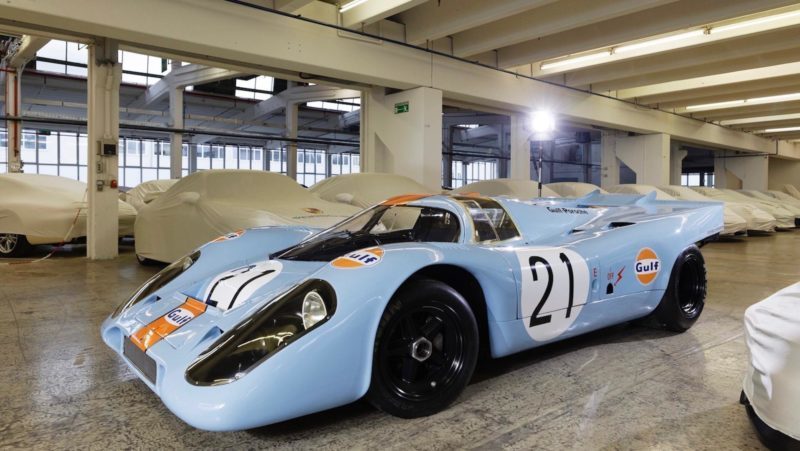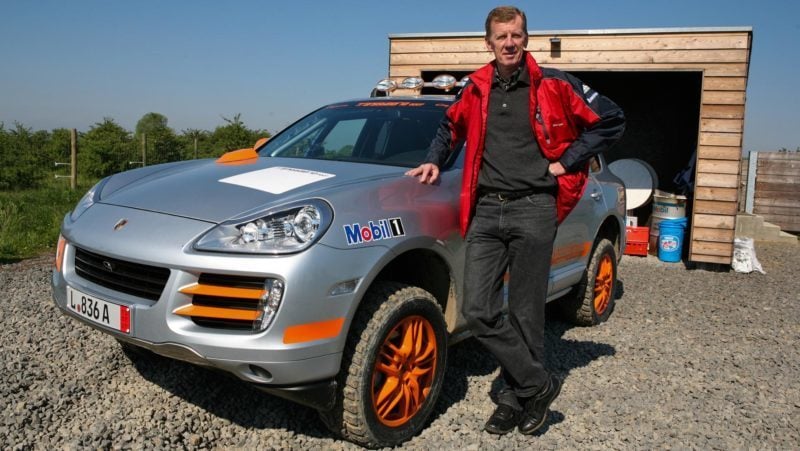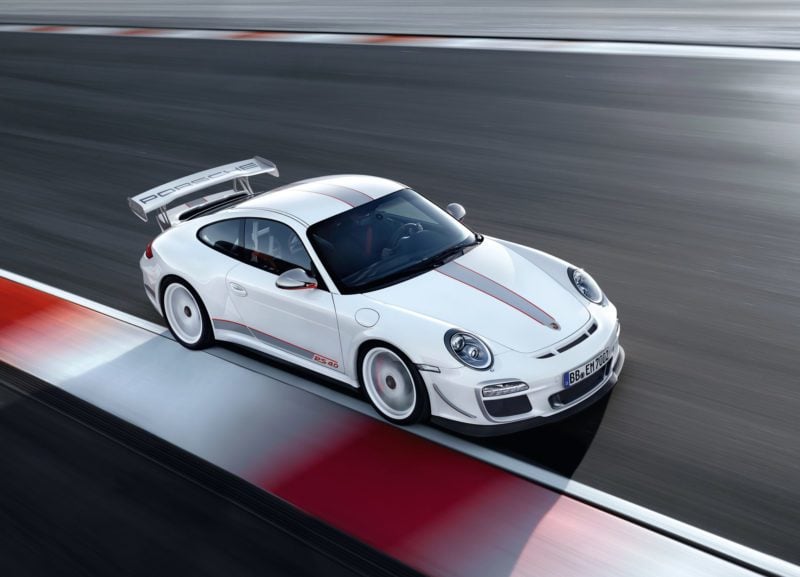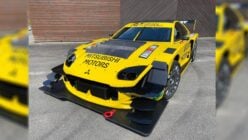Seventy years ago the first Porsche road car became a reality. Since then the German automaker has given the world several legendary models.
To celebrate the 70th anniversary of the Porsche road car, we are taking a look back at seven iconic models that make up the company’s roster. However, this is only a small selection of what makes Porsche so fantastic. To cover all of them, we’d be here for days and days talking about all of the greats.
In addition to talking about these great German cars, we will also mention some of the games you can experience them in.

Porsche 356
We will start off with perhaps the most obvious choice, the 356. As the first road-going model, it’s the genesis of the post-war Porsche brand.
From its humble beginning, the 356 set the stage for nearly every Porsche model. With its rear-mounted engine and round design, its basic formula still carries on today.
That’s not all either. The 356 is also the first Porsche to carry the “Carrera” badge. This too has stood the test of time with the moniker still proudly displayed on many Porsche cars.
While most of us associate Carrera with Porsche, it’s not often folks know the story behind it. In Spanish, it loosely translates to “race“ or “career”. However, this isn’t why Porsche choice the name. Instead, it dates back to the Carrera Panamericana race that took place in Mexico from 1950-54.
During the five years of the race, the 356 never actually won the event. But it definitely did its part to keep the history of the race alive.
Production of the 356 lasted from 1948-64 and during that time 76,000 made their way off the line. Throughout its life, Porsche gave it three revisions but still kept to the original formula.
Without the 356 it’s hard to say where Porsche would be today.
As for its connection to sim racing, it’s a popular choice among classic car enthusiast. One of its earliest appearances dates back to 2000. At the turn of the millennium, the car found its way into both Beetle Crazy Cup, Mille Miglia, and Need for Speed: Porsche Unleashed. Since then, it has gained prominence in the Forza franchise.

1969-1971 Porsche 917
Even though the 356 started Porsche down the path of road cars, racing was always at its heart. Over the years several Porsche racers tore up circuits across the globe, but perhaps one of the most notable is the 917 series of racecars.
The 917 project dates back to 1968. During that time the FIA was changing rules in order to reduce the speeds at Le Mans. As a result, the Group 6 Prototype would see a reduction of engine size from unlimited to just three-liters. However, the FIA realized that this would cause fewer teams to enter.
To entice teams more teams, the FIA allowed Group 4 sports cars to compete for three years. This is where Porsche jumped in and took full advantage of the rule change.
Using one of three engines — 4.5, 4.9, and 5.0-liters — the 917 dominated the competition.
Although at first, the car did come with its fair share of issues. During the 1969 running of Le Mans, all of the 917 cars failed with various mechanical problems. This allowed Ford to take the checkered flag with its GT40.
The next year Porsche came back with a bang, and this time it had a rival: the Ferrari 512. The drivers fought back and forth over the course of the race, but ultimately the 917 prevailed. In 1971, it repeated the same process again.
This iconic battle also set the stage for one of the greatest racing movies of all time — Le Mans starring none other than Steve McQueen.
Once the new Le Mans rules were put into place, the 917 and its dominance faded. However, Porsche went back to its roots in sports car racing with the car. There it lived on until 1973 and again with a brief stint in 1981.
Until recently the 917 was mostly off limits to gamers, however, Project Cars 2 recently changed that, first with the Porsche Legends pack, and more recently with its Spirit of Le Mans DLC. As an added bonus SMS even included in the classic Le Mans circuit so players could recreate the legendary duel between Porsche and Ferrari.

Porsche 959
The 959 captures everything great about two wild things: the 1980s and Group B rally.
Its 2.8-liter twin-turbo flat-six made upwards of 523hp depending on the model. All this power could rocket the car to 60 in around three seconds and would push it all the way to 197mph.
This made it one of the quickest cars in the world when it debuted in 1986 and for a time it even held the top speed record. Although it quickly fell once the not-a-Porsche RUF CTR blitzed it in 1987.
To keep all the power in check, the 959 also came with AWD — a first for a Porsche road car. The system worked so well, that Porsche decided to adopt AWD going forward for its 911.
Between the engine and the complicated AWD system, in 1986 it was considered the most technologically advanced car ever made.
The body also incorporated several unique materials that were uncommon for even most supercars to keep the weight down. The body shell contained mostly aluminum and Kevlar, while the floor used Nomex. These weight saving measures worked incredibly well too. Altogether the 959 tipped the scales at just 3,197lbs.
Since the 959 was only a homologation for Group B, it remains fairly rare today. Only 345 were built for street use.
One other important piece of legal history involves the 959 too.
Bill Gates’ is a Porsche enthusiast and originally owned a 1979 911 Turbo — which lead to his arrest for speeding. When the 959 entered the scene, Gates had to have one and with his vast fortune could easily afford the $225,000 price tag.
He ordered one directly from Porsche and a few months later it showed up at the Port of San Francisco. There US Customs impounded the car and kept it locked away for over a decade.
Due to the way import laws work in the US, in order for a car to legally be imported, it needs to pass crash testing. Since Porsche never gave the feds four cars to crash test, it was never street legal in America.
Since Gates wanted his car, he worked with several other car collectors to pass the “Show and Display” law. After a long fight, Gates eventually won and could finally get his car — with the stipulation it only traveled 2,500 miles a year.
Thankfully gamers don’t need to worry about this. The 959 is a prominent staple in many games going all the way back to right around the debut of the car. Some notable examples include The Duel: Test Drive II, Project Cars 2, the Forza series, and even the Outrun series.

2003 Porsche Cayenne
Our next choice is a bit controversial, but the importance of the Cayenne is undeniable for the brand.
The Porsche SUV changed our way of thinking about sports car brands. Up until then, they mostly distanced themselves from anything other than outright performance vehicles. However, the surge in popularity of these vehicles couldn’t be ignored.
Porsche being Porsche, a run of the mill SUV was off the table. Instead, it opted to bridge the gap between sportiness and practicality. In its first generation, the Cayenne brought with it a 4.5-liter twin turbo V8 putting out 450hp — as much as the 911 Turbo of the time.
This massive engine, with gobs of power, took the 5,000lb behemoth to 60 in well under six seconds.
Up until then, performance SUVs were more of a laughable exercise by various companies. Really the only serious competitors before that were the Lamborghini LM002 and the GMC Typhoon, both from the early 90s.
Even with all this power, Porsche didn’t forget the “utility” in the SUV acronym. In 2007 Porsche set out to prove this by entering the Cayenne in the Transsyberia Rally, a grueling off-road race across Russia into Mongolia. In the end, it took home the victory showing it was more than just about speed.
Today the Cayenne is even more bonkers. With its 4.8-liter twin-turbo V8, it rockets to 60 in under four seconds. Despite this, it’s still not even close to the fastest SUV around now that virtually every sports car brand has an SUV of its own.
With its steady sales and popularity, it also continues to bring in a significant amount of money for the Porsche brand. This means it allows Porsche to continue on making things like 911 and Cayman without worrying about the bottom line.
Due to its popularity and off-road racing past, the Cayenne does find its way into a wide array of games. Most notably is the — of course — Forza series, but it’s also available in Gravel and Shox Rally Reinvented.

Porsche Carrera GT
This is probably an unpopular choice to follow the Cayenne since it almost spelled the end for the GT. Thankfully though, Porsche kept the idea of the GT kicking around while it was building its SUV. Then in 2004 the world finally got its taste of one of the most insane supercars of the time.
At its heart, the GT used a sizable 5.7-liter V10 capable of 603hp. This put it up there with some pretty impressive company including the Ferrari Enzo, Mercedes SLR McLaren, and Pagani Zonda.
Furthering the awe-inspiring numbers from the car was its performance data. It hit 60 in just 3.5 seconds, flat out would top 206mph, and even ran the Nurburgring in 7:28.00. While other cars, including its main rivals, were faster it marked one of the quickest Porsche street cars ever.
Unlike its rivals though, the Carrera GT sounded like nothing else on the road. Since it was essentially a race car made for the road, it sounded like one. The bark of its mighty V10 sounded closer to an F1 car than a Le Mans racer.
That same track-bred pedigree mean the car could be a handful to drive. This sadly came to light in 2013 when the car claimed the lives of Paul Walker and Roger Rodas.
Nevertheless, the Carrera GT is still an important part of the Porsche story. Without it, the world might never have gotten the absolutely brilliant 918 Spyder.
As you’d expect from a car of this caliber, it’s a must-have in many racing games. From the Forza series to the Need for Speed series, and even Project Gotham Racing, the GT makes several well deserved appearances.

Porsche GT3 RS 4.0
Like the Carrera GT, the GT3 RS 4.0 is also a race car for the road. However, unlike its GT sibling, it’s a bit more civil while being just as quick.
The GT3 4.0 RS is the Porsche parting gift to the automotive world for the end of the 997 generation. As far as farewell gifts go, the RS was pretty spectacular too, and still remains so even today.
As its name suggested, the RS 4.0 came with a 4.0-liter flat-six engine. With 493hp, it’s quick with a sprint to 60 in just 3.8 seconds and a top speed of 194mph.
Until the recently released GT3 RS, the RS 4.0 was among the quickest and most power naturally aspirated 911s around.
However, outright speed isn’t the car’s purpose. Instead, it’s made for the sheer enjoyment of driving. Using lightweight materials and removing everything it could, Porsche brought the RS 4.0 weight to just under 3,000lb. Couple this light weight with rear wheel drive and a six-speed manual and you have yourself one of the best driver’s cars around.
Unfortunately, Porsche limited the run of RS 4.0 to just 600 cars. This means very few people will ever get to experience how spectacular the car is in the corners.
Thankfully we have sim racing games to fill in the gaps. With appearances in both the Forza Horizon and Forza Motorsport series, it lets gamers at least have a go on a digital level.

Porsche 919 Hybrid and Evo
Now we come to our final entry on the list and we saved the best for last, the 919 Hybrid and its unrestricted cousin the 919 Evo.
Heralding a triumphant return to Le Mans, the 919 set out to bring home another victory for the Porsche resume. However, in its debut year, 2014, it got off to a rocky start.
Once 2015 rolled around though it channeled its inner 917 and started dominating races. The LMP1 challenger racked up wins across the World Endurance Championship, including the 24 Hours of Le Mans. Throughout 2016 and 2017, it yielded similar results and continued to beat up on the competition.
At the end of 2017 though, the 919 program folded. Instead of shooting for another monster of a Le Mans car, Porsche is now turning its efforts to Formula E. With a return to endurance racing doubtful, at least for a little while, the Porsche Racing Team wanted to give the car a proper send off.
Cue the 919 Evo.
Without any rules to hold it back, engineers had free reign to make the 919 the ultimate version of itself.
To start with the V4 engine lost all of its restrictors. This bumped the power output to a whopping 720hp. Then to further up the output, all the restrictors from the electric motors went out the window too. This added another 440hp, bringing the total to 1,180 ponies.
Aerodynamics got a major rework too. Now the car had 53% better downforce and a 66% increase in aerodynamic efficiency.
If that wasn’t enough, the 919 also went on a diet. It lost 57lb bringing its dry weight to a scant 1,872lb.
Currently, the 919 is on a victory lap of the world popping into race tracks to smash records. It’s already broke the 1:42.553 record at Spa-Francorchamps with a 1:41.8 lap time and it’s on the hunt for more. Its new goal is potentially a sub-five minute lap time around the ‘Ring.
Unfortunately, the Evo isn’t in any racing game, at least not yet. But we do have the 919 Hybrid to enjoy. It’s spread to all of the major sim racing titles, from Gran Turismo Sport (the first official appearance by the marque in the franchise) to Forza (in 2015 and 2017 form), Assetto Corsa, Project CARS 2, and even iRacing.
Like we said at the beginning, this is only a small sampling of some of the greats Porsche has produced over the years. Have your own favorites? Let us know, and join us in celebrating the brand’s birthday!
See more articles on GTPlanet Lists and Porsche.











